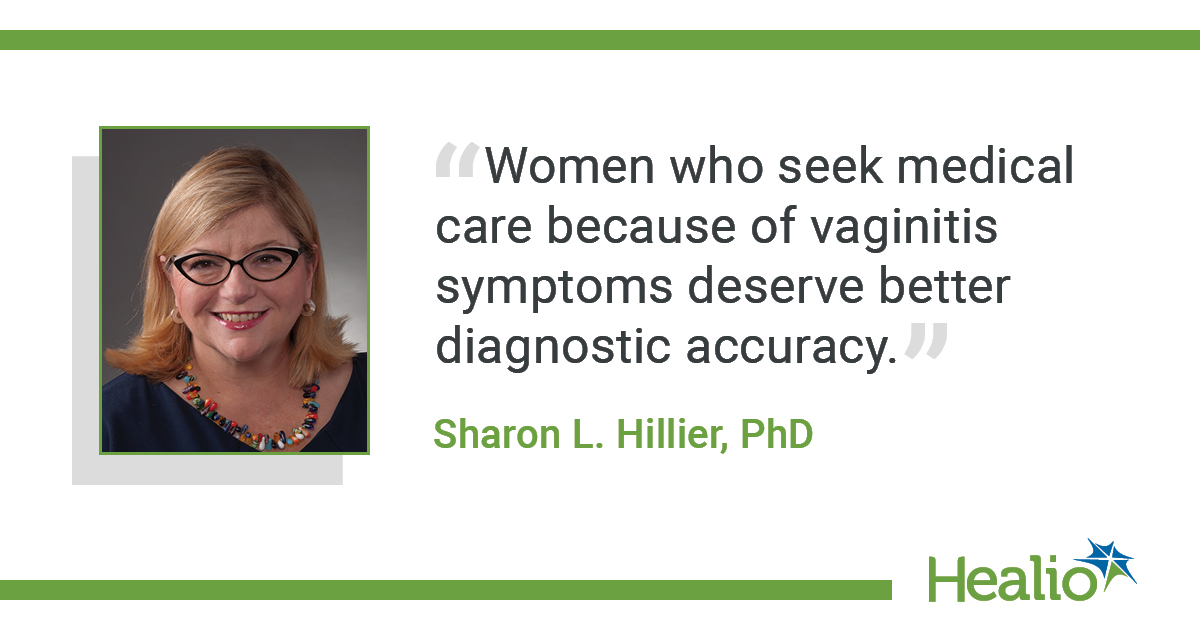Many women with symptoms of vaginitis receive inappropriate treatment

More than 40% of women with vaginitis symptoms in a community practice setting received inappropriate treatment, according to a multicenter, single-visit study.
“Women referred to our specialty vaginitis clinic for diagnosis and treatment of vaginitis were infrequently evaluated by their referring physician according to the CDC-recommended point-of-care tests such as wet mount, pH testing and the whiff test,” Sharon L. Hillier, PhD, Richard Sweet Professor of Reproductive Infectious Disease and vice chair for faculty affairs at University of Pittsburgh School of Medicine and director of reproductive infectious disease research at UPMC Magee-Womens Hospital, told Healio. “We set out to explore how women being seen in community-based clinics were evaluated when they came in with symptoms of vaginitis. More importantly, we wanted to find out whether they were receiving the right treatments for the conditions they had.”
Hillier and colleagues also aimed to determine whether empiric treatment given to women with vaginitis symptoms had any effect on whether or not they came back for repeat visits in the following 3 months.
The researchers evaluated samples from 290 symptomatic women seen in eight University of Pittsburgh Medical Center-affiliated clinics. According to the study, four of five vaginal swabs were collected for an FDA-authorized nucleic acid amplification test (NAAT) for vaginitis/vaginosis diagnosis, Nugent scoring for bacterial vaginosis (BV), yeast culture and a second NAAT for Trichomonas vaginalis (TV). Medical records enabled the researchers to verify the treatments prescribed within 7 days of the index visit and the rate of return visits within 90 days.

Most women were white (79%) and not pregnant (90%). The median age was 29.4 years (± 6.5 years) and 38% reported vaginitis treatment within the preceding month.
According to Hillier, the study yielded three main findings. First, the researchers noted that CDC-recommended point-of-care tests were “rarely” performed, with fewer than 20% of women evaluated by wet mount (17%), vaginal pH (15%) and potassium hydroxide/whiff tests (21%). Additionally, among women with a laboratory-diagnosed cause of vaginitis (n = 170), including BV, vulvovaginal candidiasis (VVC) or TV, nearly half (47%) received at least one inappropriate treatment, Hillier said “that is, they were treated with antibiotics for BV when they really had VVC or they received antifungals when they really had TV or BV.” Finally, according to Hillier, one-third of the 120 women without BV, TV or VVC received inappropriate prescriptions, including antibiotics and antifungals.
The rate of return visits ranged from 17% for women with VVC, 35% for women with BV and 42% for women with TV. Follow-up visits for vaginal symptoms were “surprisingly” also common among women with no laboratory-confirmed vaginitis diagnosis at the index visit; 12% of these women returned with symptoms of vaginitis. Return visits in the subsequent 3 months were significantly more likely among those who received empiric treatment for vaginitis compared with those women who were not treated (22% vs. 6%; P = .02).
“Women who seek medical care because of vaginitis symptoms deserve better diagnostic accuracy,” Hillier said. “We need to do better. We should consider use of FDA-cleared diagnostic tests instead of relying on point-of-care testing. We also need to recognize that empiric treatment of women without infections may cause new problems or symptoms.” – by Caitlyn Stulpin
Disclosure: Hillier reports receiving support through her institution from Becton, Dickinson and Company for the conduct of this study through an investigator-initiated grant and from Cepheid for other research unrelated to this study. She also reports receiving consulting fees from Curatek, Dare Biosciences, Hologic, Merck and Pfizer and grants from Curatek. All other authors report no relevant financial disclosures.
